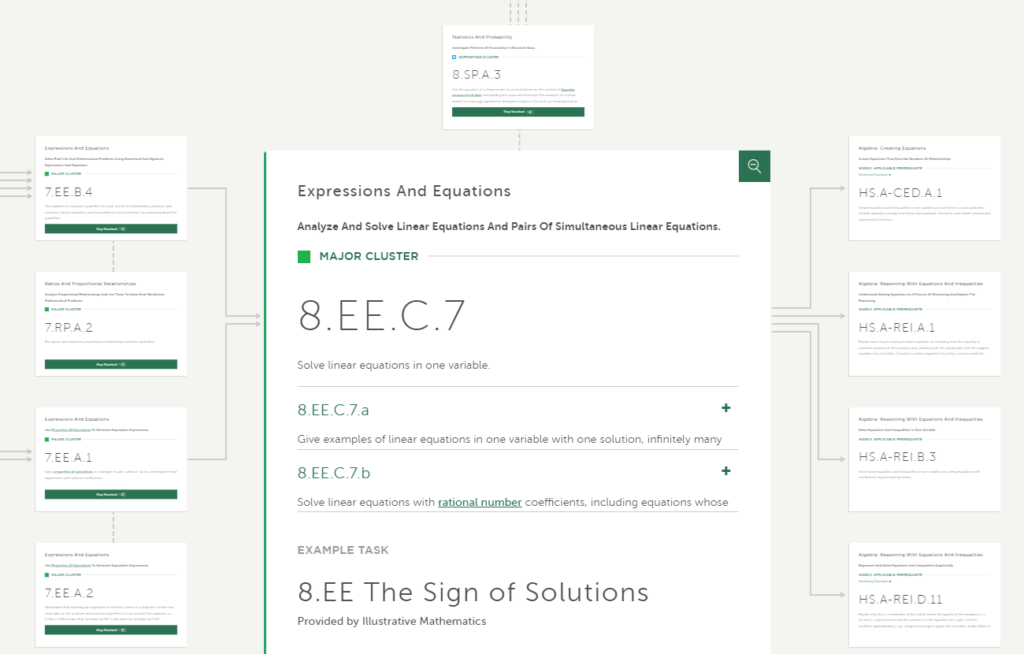One of my favorite phrases in education is “unfinished learning.” By thinking about students’ gaps and weaknesses in this way—as more of a work in progress—we promote a growth mindset in both the teacher and the student. The number one question I receive from beginning and veteran teachers across the nation is “How do I address unfinished learning in my students but still stay on grade level?” I remember thinking this same question when I started teaching high school math twelve years ago. Since that time, I have had the opportunity to work with the standards and their development at the school, district, and state level. These experiences have given me the chance to find a solution to this question.
The biggest struggle I hear from teachers is that students “were never taught this information.” In my experience, I find the students have been taught the material, but have not fully mastered it. Often it only takes a quick reminder in order for students to remember that they do, in fact, know what is being asked. However, this is not always the case and unfinished learning needs to be addressed. The best way to help your students with unfinished learning is to know the standards: the standards for your grade, the grade before, and the grade after. Coherence in the standards is the intentional layout of what students are to know from year to year in order to master a concept.
The Coherence Map on Achieve the Core is the best resource available for finding exactly what your students were supposed to know before they came into your class. By starting with the standard that you are teaching, the Coherence Map can show you connections to standards before the current grade level, during the current grade level, and after the current grade level as well as provide tasks for students to show mastery of these standards. Take a look at 8.EE.C.7: Solve linear equations in one variable.
Looking at the Coherence Map, we can see that there are two standards from 7th grade that students needed to master in order to be able to complete this 8th grade standard. And this particular 8th grade standard must be mastered before the student can be successful in four different high school standards. The Coherence Map also shows us that there are several standards in 8th grade that can be taught together or as a support of a standard that is part of the major work of the grade, such as 8.SP.A.3 above.
So how can the Coherence Map be helpful with unfinished learning? Here are a few suggestions that you might try.
- Anticipate student struggles – While planning a unit or lesson, use the Coherence Map to help identify the weaknesses that a student might have that would hinder them from mastering the grade-level standard. By anticipating where the student might struggle, you can plan your lessons to address some of these weaknesses.
- Know when to stop – Using the Coherence Map to look ahead at what will be covered on the same topic at a later level allows the teacher to focus on the standard at grade level. By doing this, teachers can incorporate strategies to address unfinished learning, such as individualized remediation and sidebar think clouds, into their lesson.
- Find quality tasks – When unfinished learning is identified in a student, finding quality tasks to help the student is critical. The Coherence Map has an example task for almost every standard that can be used to both remediate and check for mastery.
By implementing these strategies and using the Coherence Map, I have found success in holding all students to grade-level standards. For example, as a high school math teacher, fractions and integer operations are the biggest piece of unfinished learning for my students. Since I know that these are taught in elementary (fractions) and middle school (integer operations), I make sure to work on grade-level topics with these concepts incorporated, both in classroom lessons and homework. I now have more time in the year to focus on my own content.
As you begin the new school year, use the Coherence Map to intentionally plan ahead in your lessons and encourage your students to work through their struggles to complete their unfinished learning.


















For Leadership Meeting
We try to use a scheduled intervention time each day to address the student struggles. Nice work!